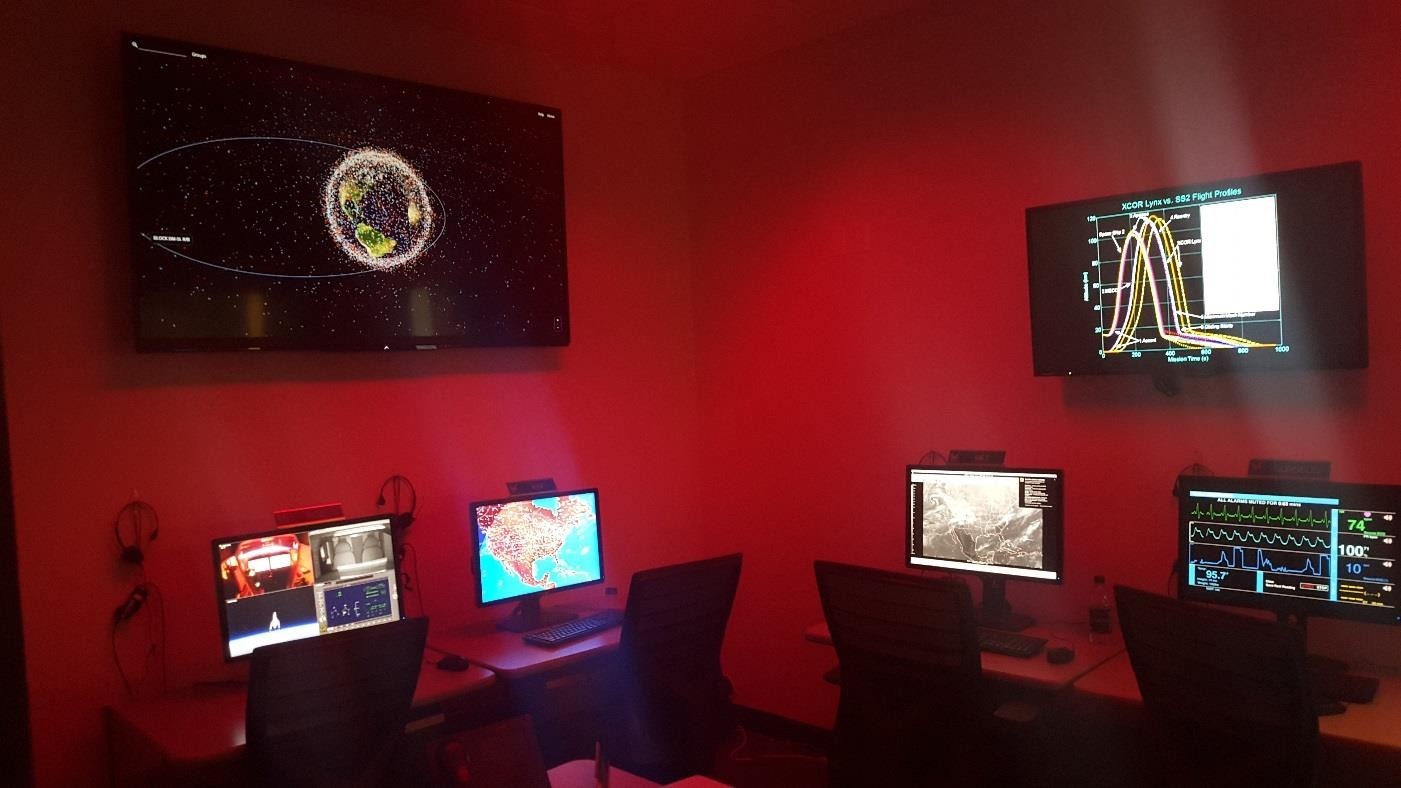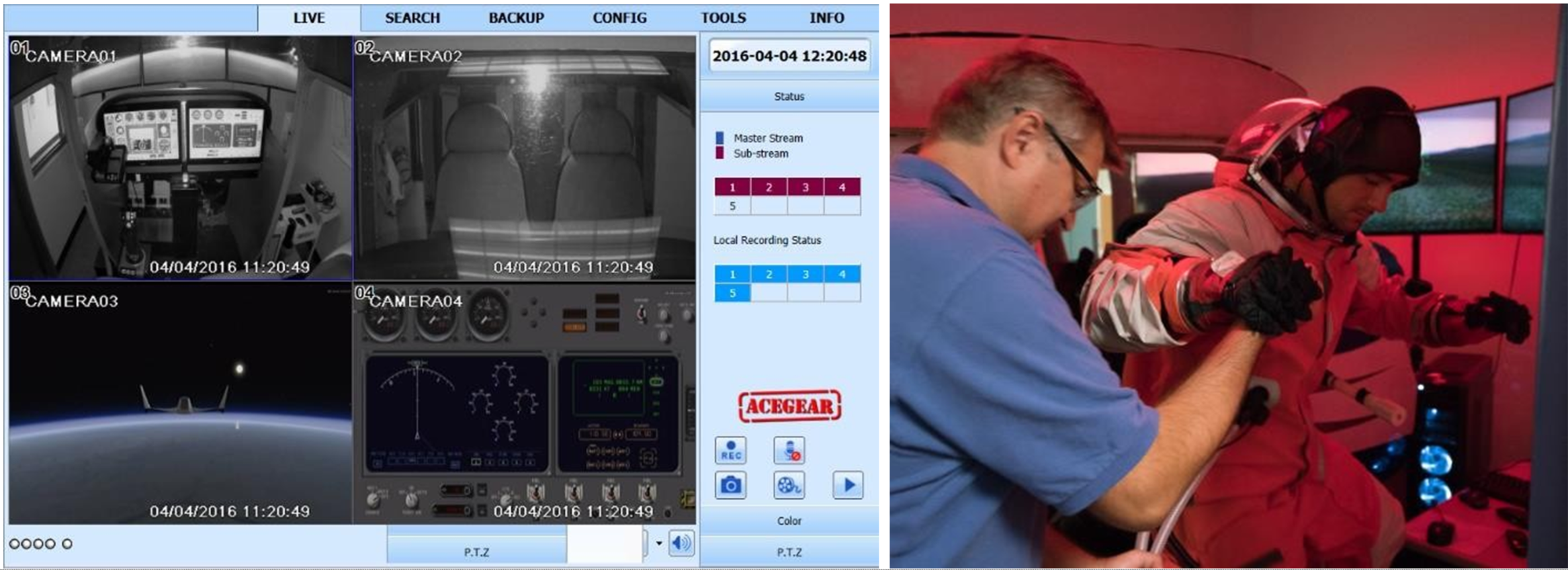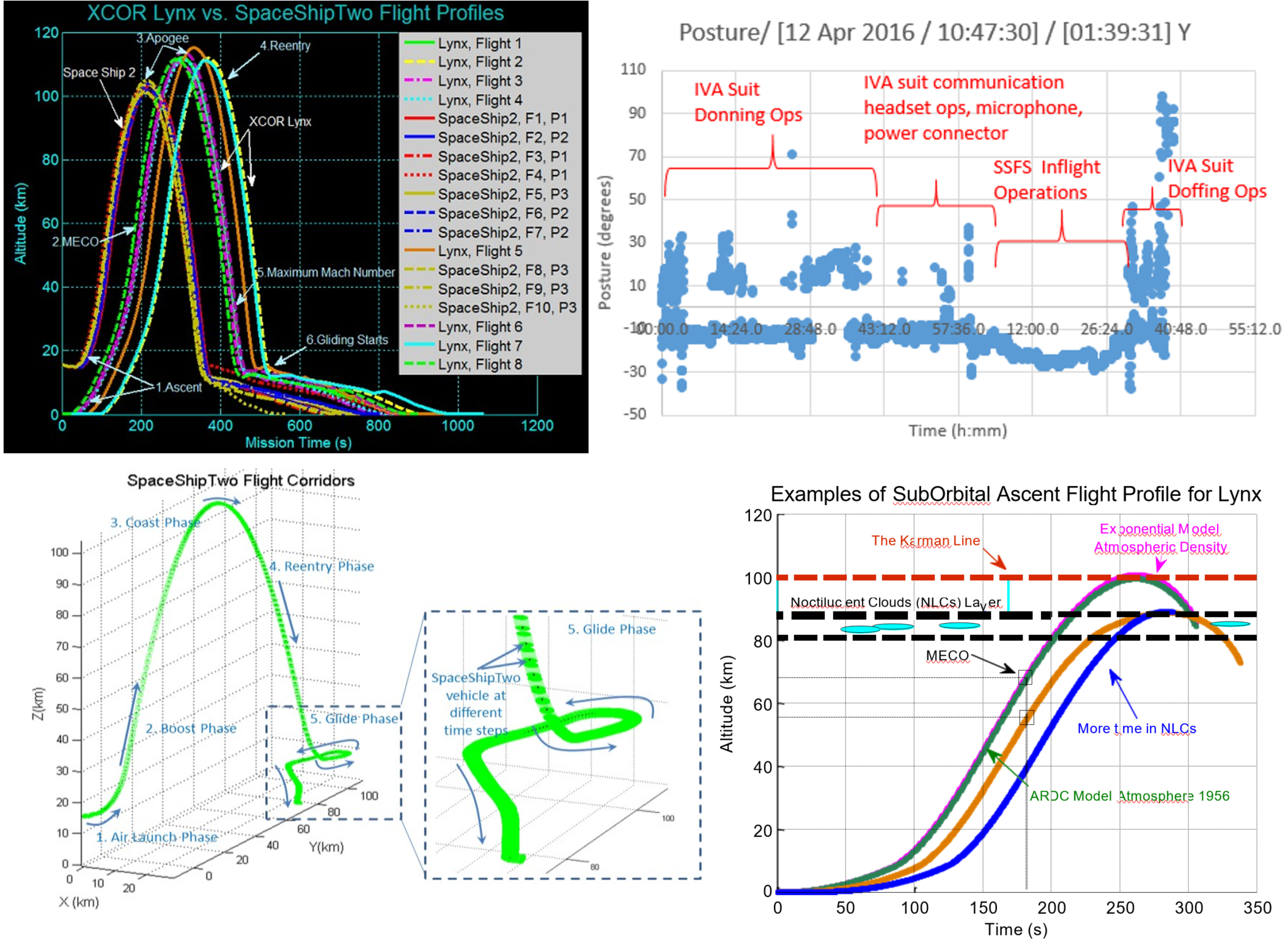Aviation/Aerospace Research: Suborbital Space Flight Simulator
PI Pedro LLanos
The Suborbital Space Flight Simulator (SSFS) replicates in-vehicle parameters of a suborbital launch vehicle. These suborbital missions can be monitored from the Mission Control Center (MCC). These flight parameters include the size, general layout, and typical system indicators for a suborbital spaceflight mission, as well as an approximate replication of the visuals that would be seen on a suborbital spaceflight mission. The SSFS can be configured to replicate the mission profile and layout of multiple suborbital launch vehicles. The SSFS records 56 flight data parameters that can be used for studies. The SSFS can potentially be used by multiple organizations, with multiple capabilities.
This research will help students and researchers to use SSFS-generated data to improve their understanding of the fundamentals of suborbital space flight, improve the confidence levels of this research tool for training purposes, and generate large datasets of suborbital missions that can be used for flight operational quality assurance (FOQA). By analyzing these simulated suborbital flights, it will be possible to learn a great deal about the different parameters of various suborbital trajectories and assess pilot performance.
It will also be possible to assess metrics aligned with the flight profile and to determine difficulties the pilot encountered when flying nominal and off-nominal profiles. Some of these difficulties are addressed herein and displayed in a graphical context to assist the reader’s visualization. This research capability enhances our understanding of some key factors, such as winds effects, trajectory, and vehicle parameters variations to streamline the space vehicle operations and enhance science in the upper mesosphere at about 85 km, where different types of science activities can be conducted, such as neutral dynamics, gravity waves, tides, oscillations, and noctilucent clouds imagery and tomography. Understanding these effects is crucial to refine current space operations and establish more robust procedures. These procedures will involve training new space operators to conduct and coordinate space operations in class E above FL600 airspace within the Air Traffic Organization (ATO). Space vehicles such as SpaceShipTwo can spend up to 6 minutes in class E airspace above FL600 after launch. Most of this time is dedicated to science data collection in microgravity and maximizing the science is a key priority. Typical suborbital trajectories cut through the noctilucent cloud layer in the mesosphere region from about 260,000 feet to 280,000 feet during the ascent and descent. This space activity falls within the D-layer of the ionosphere (50-90 km). In each of these segments, the space vehicle spends about 10 seconds in the region of interest, totaling about 20 seconds of total in-situ uninterrupted science in the mesosphere. The SSFS is an important tool to evaluate key functional data parameters that must be considered for suborbital spaceflight participants wearing pressurized suits for intravehicular activity (IVA) from Final Frontier Design’s (FFD) fully pressurized third-generation spacesuit as part of their training. Zephyr BioHarness, BioRadio instrumentation, and Hexoskin smart shirt can be used to collect biometric response data from the participants as they performed their duties inside the SSFS.
The SSFS is also equipped with MCC with several consoles, such as Flight (Director), Surgeon, Weather, Integrated communications officer, and Air Traffic Control.
Images below: Mission Control Center and Suborbital Space Flight Simulator

Images below: Examples of suborbital trajectories with several space vehicles. Some of these trajectories can be used to maximize science operations
Research Dates
01/01/2015
Researchers
Categories: Faculty-Staff





